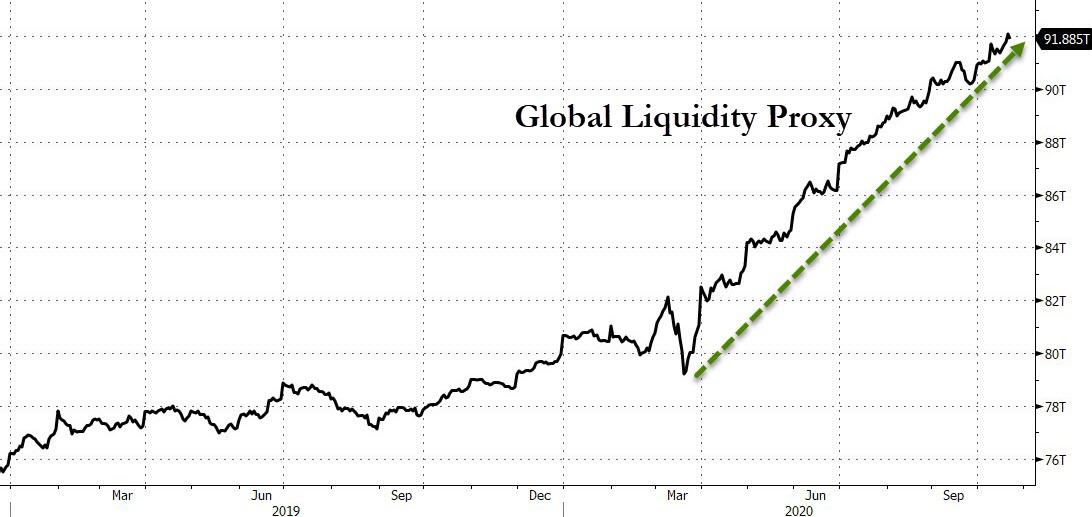Stimulus Quality, Not Size, Will Matter for Markets
Tyler Durden
Thu, 10/22/2020 – 14:25
By Laura Cooper, macro strategist who writes for Bloomberg
As growth and debt trajectories diverge next year, targeted stimulus support will matter more for risk assets than size. There’s been no single policy mix to guarantee optimal results for risk assets, according to analysis based on the latest International Monetary Fund Fiscal Monitor.
Canada beat out developed peers by deploying direct spending of 12% of gross domestic product and expanding its balance sheet three-fold. Yet its benchmark S&P/TSX stock index has underperformed U.S. peers, and returns are on par with stocks in Germany, which allocated less than 10% of GDP to spending efforts.
Loan guarantees were prominent in Europe, where sovereign bond spreads were wider than in other major economies. Italy’s guarantees are at almost 35% of GDP, which helped the FTSE MIB advance 25% since March — but that gain is less than half of the S&P 500’s over the same period.
Meanwhile, the FTSE 100 lagged peers despite the U.K.’s balanced spending and liquidity mix, even adjusting for a 2Q contraction that was double most major economies.’
Part of the challenge in determining an optimal mix is stripping out the monetary policy effect. The $11.7 trillion of government lifelines this year were accompanied by overwhelming liquidity injections led by the Federal Reserve and European Central Bank, and the launch of quantitative easing programs elsewhere.
With money markets signaling policy rates will remain low in the coming year and the waning QE impulse, the policy multiplier will be greatest for countries that embark on targeted measures, based on IMF estimates.
There’s been little appetite for loans despite guarantees, amid private debt overhangs that clock in at almost 150% of GDP in advanced economies. Instead, measures such as an investment ramp-up to spur business spending or promote hiring could help more.
France, Australia and Germany could outperform on this front, given current fiscal plans. These countries have funds allocated for innovation, digital infrastructure and employment training, which sets the stage for growth revivals.
Meanwhile, risk assets in any countries where there’s risk of withdrawing lifelines too rapidly will fall behind. IMF monitoring pointing to cyclically-adjusted deficits shrinking as austerity returns, with the greatest pullback in Canada and the U.S., barring post-election stimulus.
Bond market performance will be determined by the willingness of central banks to monetize debt. The Fed has already funded two-thirds of new government issuance this year, while the ECB and BOE have mopped up just over 70% and 50%, respectively
Italian benchmark yields are at record lows despite a debt-to-GDP ratio of ~162%, indicating investor confidence that debt burdens will be shared. The loss of Canada’s AAA status has been secondary to the impact from the Bank of Canada, which has been buying government securities to plug the economic collapse.
All in, timeliness was the priority for fiscal measures to date. But moving forward, it will be all about targeted measures as markets focus on which economies are getting the most bang for their buck on the growth front.
![]()
Zero Hedge’s mission is to widen the scope of financial, economic and political information available to the professional investing public, to skeptically examine and, where necessary, attack the flaccid institution that financial journalism has become, to liberate oppressed knowledge, to provide analysis uninhibited by political constraint and to facilitate information’s unending quest for freedom. Visit https://www.zerohedge.com

